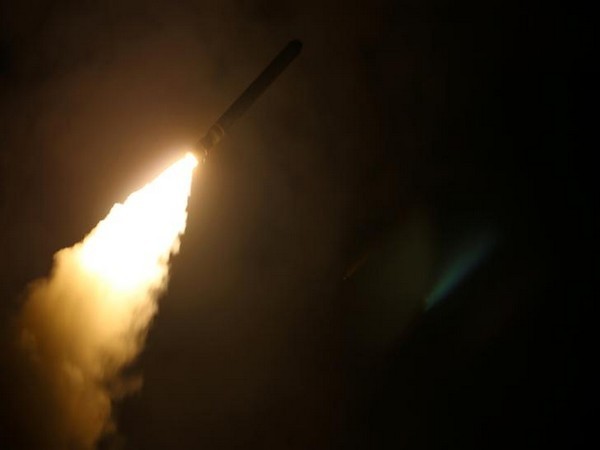U.S. carrier, allied ships hold missile defence drill after N. Korea tests
On Wednesday, the United States accused China and Russia of enabling North Korean leader Kim Jong Un by blocking attempts to strengthen U.N. Security Council sanctions on Pyongyang for its nuclear weapons and ballistic missile programs. South Korean President Yoon Suk-yeol, who is set to speak to Kishida by telephone on Thursday, told reporters his country would ensure its security through its alliance with the United States and cooperation with Japan.

North Korea fired two short-range ballistic missiles into the sea on Thursday in the direction of Japan, as a U.S. aircraft carrier and allied warships held a drill that simulated shooting down one of the North's missiles. North Korea has launched about 40 missiles this year, including its largest intercontinental ballistic missiles (ICBMs), and appears ready to hold its first nuclear test since 2017, officials in Seoul and Washington have warned.
Thursday's launches followed the return of the carrier, USS Ronald Reagan, to waters off the Korean peninsula, and a U.N. Security Council meeting held in response to the North's recent tests. The missile launch was the sixth in 12 days and the first since North Korea fired an intermediate-range missile (IRBM) over Japan on Tuesday, which prompted joint South Korean and U.S. missile drills in which one weapon crashed and burned.
The launch was reported by South Korea's Joint Chiefs of Staff and the Japanese government. "This is the sixth time in the short period, just counting the ones from the end of September," Japanese Prime Minister Fumio Kishida told reporters. "This absolutely cannot be tolerated."
The launch came about an hour after North Korea condemned the United States for talking to the United Nations Security Council about Pyongyang's "just counteraction measures" on joint South Korea-U.S. drills, suggesting its missile tests are a reaction to the allied military moves. In a statement, the reclusive nation's foreign ministry also condemned Washington for repositioning the U.S. aircraft carrier off the Korean peninsula, saying it posed a serious threat to the stability of the situation.
The carrier and its strike group of accompanying warships was abruptly redeployed in response to North Korea's IRBM launch over Japan. The carrier strike group joined destroyers from South Korea and Japan in maritime missile defense training, the South Korean military said on Thursday.
"This training focuses on mastering detection, tracking and interception procedures through shared target information under a scenario of (North Korea) conducting ballistic missile provocations," it said in a statement. A State Department spokesperson said the United States condemned Thursday's launch as a violation of the United Nations Security Council resolutions and a threat to regional neighbours and the international community.
The spokesperson, however, added that Washington was committed to a diplomatic approach and called on the North to engage in dialogue. On Wednesday, the United States accused China and Russia of enabling North Korean leader Kim Jong Un by blocking attempts to strengthen U.N. Security Council sanctions on Pyongyang for its nuclear weapons and ballistic missile programs.
South Korean President Yoon Suk-yeol, who is set to speak to Kishida by telephone on Thursday, told reporters his country would ensure its security through its alliance with the United States and cooperation with Japan. Tokyo lodged a "vehement protest" with North Korea over Thursday's launches through delegations in Beijing, Japanese Defense Minister Yasukazu Hamada said.
"North Korea has relentlessly and unilaterally escalated its provocation especially since the beginning of this year," Hamada told reporters. Thursday's first missile probably flew to an altitude of about 100 km (62 miles) and a range of 350 km (217 miles), while the second had an estimated altitude of 50 km (31 miles) and covered 800 km (497 miles), probably taking an irregular trajectory, he said.
Many of North Korea's most recent short-range ballistic missiles (SRBMs) are designed to fly on a lower, depressed trajectory and potentially manoeuver, complicating efforts to detect and intercept them. South Korea's JCS said the missiles were launched from near the North Korean capital of Pyongyang.
The United States and its allies have stepped up displays of military force in the region, but there appears little prospect of further international sanctions by the U.N. Security Council, which has already passed resolutions banning the North's missile and nuclear development. China's deputy U.N. ambassador, Geng Shuang, said the Security Council needed to play a constructive role "instead of relying solely on strong rhetoric or pressure."
In May, China and Russia vetoed a U.S.-led push for more U.N. sanctions on North Korea over its renewed ballistic missile launches, publicly splitting the Security Council for the first time since it began punishing Pyongyang with sanctions in 2006.
(This story has not been edited by Devdiscourse staff and is auto-generated from a syndicated feed.)
ALSO READ
Russia summons South Korean ambassador in protest over sanctions
UN Security Council meeting briefly interrupted due to rare earthquake in New York
Gaza: ‘No protection’ for civilians, aid workers, Security Council hears
UN Security Council meeting briefly interrupted due to rare earthquake in New York
World News in Brief: Security Council condemns DR Congo attacks, cholera testing breakthrough, ‘my health, my right’ campaign










